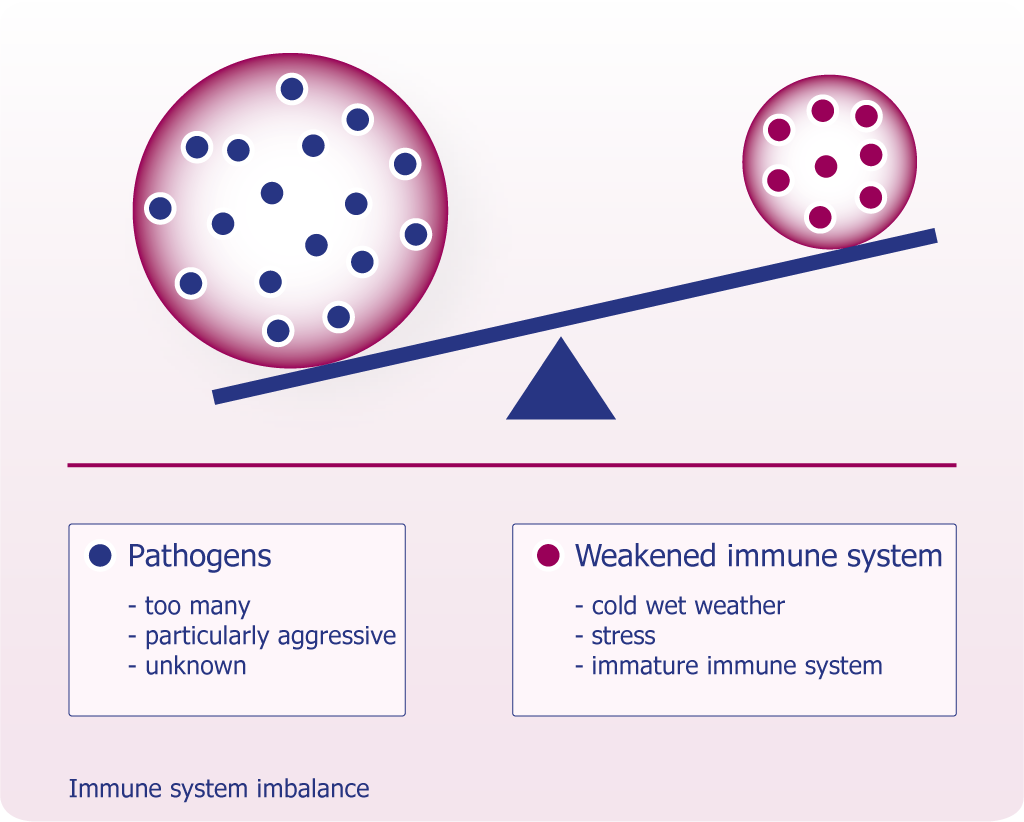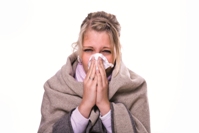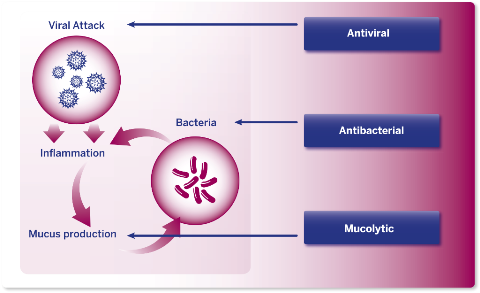The Respiratory System
Our cells constantly need a supply of fresh oxygen (O2) and removal of carbon dioxide (CO2). This gas exchange takes place in the respiratory system. Respiration or breathing is controlled by our brain′s respiratory centre via a feedback system and a system of muscles, including the diaphragm and two sets of (internal and external) intercostal muscles found between the ribs.
When we inhale, our chest and lungs expand and air containing oxygen flows into our lungs. Once the air reaches its final destination, tiny balloon-like structures called alveoli, oxygen passes into the bloodstream by diffusion. At the same time, carbon dioxide diffuses out of the bloodstream into the alveoli. When we exhale, or breathe out, the air now carrying higher concentrations of carbon dioxide is expelled from the body.
The route from the mouth and nose to the lungs is known as the respiratory tract, and there is a distinction between the upper respiratory tract and the lower respiratory tract. The two are also susceptible to attack by different pathogens, which are breathed in with the air supply, and to different illnesses.

Do you know?
The immune system has a two-tier structure with an innate and an acquired part. Infections train our immune system and improve its defense.
Rhinopharyngitis – the common cold
The most common upper respiratory tract infections are infections of the nasal mucosa (i.e. rhinitis, or ’runny nose’), throat infections (pharyngitis) and infections of the voice box, or larynx (laryngitis). The first place that pathogens (usually viruses but sometimes bacteria) settle is the nose-throat area. The symptoms produced are practically always the same: sore throat, runny nose and cough. This is when it is important to act.
Factors that promote this type of cold include dry and damaged mucosa in cold periods, a depressed immune system, stress, tiredness and a generally unhealthy way of living. Generally speaking, these types of infection are irritating and unpleasant, but they are mostly harmless: Patients suffer from a general feeling of illness, may have a headache or pain in their joints, are tired and feel generally worn out. Frequently, in the case of throat infections, they may also have a sore throat and fever. Clear signs of a common cold include an inflamed nose and throat.
A common cold generally lasts around 7-10 days. During this period, it is important to give the body sufficient rest. The healing process may be supported by moistening the mucosa, drinking ample fluids or using inhalations and decongestants.
However, the duration of the common cold may be significantly shortened by taking the clinically proven Cold & Cough® made from Pelargonium sidoides root extract, Malva sylvestris and Curcuma longa.
This gets to the root of the problem by preventing the adhesion of viruses and bacteria by coating the respiratory tract with a protective film that works as a barrier. Furthermore it activates the body′s own immune system and prevents the proliferation of bacteria that have already invaded the body. Cold & Cough® thus shortens the duration of the disease and helps people to recover faster.

When a common cold gets worse
The risk of complications grows, however, without treatment or when the body is unable to heal itself. On one hand, the viruses in the respiratory tract will multiply, infecting areas that are still healthy and, on the other hand, a common cold can pave the way for bacterial superinfections. A superinfection is when a viral infection builds the basis for a subsequent bacterial infection due to a weakened immune system. Should overall health not improve, or symptoms get worse, a doctor should be consulted as soon as possible.
Simple common colds can lead to:
- Sinusitis (inflammation of the sinuses)
- Otitis (inflammation of the middle ear)
- Tonsillitis (inflammation of the tonsils)
- Acute bronchitis (inflammation of the bronchial passages)
Using Cold & Cough® in early stages of the infection can help prevent complications and chronification.
Do you know?
Common cold & flu medicines like pain killers or nasal sprays only relieve the symptoms for a short period of time, but they don’t treat the illness or shorten its duration

Tonsillitis — inflammation of the tonsils
The most common symptoms of tonsillitis are sore throat, a general feeling of weakness, pain when swallowing and sometimes fever.
Most infections of the pharynx and tonsils are caused by common viruses. Cold & Cough® is highly recommended because it attacks the viruses and inhibits their replication. Inflammation of the tonsils is caused by bacteria only 15% of the time, most often streptococci bacteria. In such cases, antibiotic treatments can be sufficient.

Do you know?
Against common belief, only 15% of tonsillopharyngitis infections are caused by streptococci bacteria.
Acute bronchitis — inflammation of the bronchial passages
Acute bronchitis is caused by inflammation of the bronchial passages. It is one of the most common diagnoses in general medicine. Acute bronchitis occurs most frequently in spring and autumn. It affects all ages although it is most common in children, the elderly and those with a compromised immune system.
Viruses cause 90% of all cases of acute bronchitis. Initially, the viruses cause a common cold, which then moves from the upper respiratory tract into its deeper, lower areas. It is not unusual for a viral infection to be followed by bacterial bronchitis.
Cold & Cough® has proven its efficacy in bronchitis in numerous clinical studies. With its triple mode of action against viruses, bacteria and thick mucus, Cold & Cough® reduces overall bronchitis symptoms effectively.
Symptoms of acute bronchitis generally start some three or four days after the common cold.
Symptoms may include some or all of the following:
- A cough, which is the primary symptom of acute bronchitis. This may be dry at first (”non-productive”, which means without producing mucus) and after a few days may lead to a ”productive cough” with mucus expectoration.
- A general feeling of fatigue.
- A sensation of tightness, burning or even a dull pain in the chest under the breastbone. This is generally more pronounced when breathing deeply or coughing.
- A slight temperature (high fever may indicate pneumonia).
- Wheezing, especially during physical exercise.
- Hoarseness.
Should symptoms persist, a doctor should be consulted to prevent the development of chronic bronchitis.
Do you know?
One in three inadequately treated cases of acute bronchitis develops into chronic bronchitis.
What does Cold & Cough® work?
Unlike other remedies, Cold & Cough® tackles the root of the infection with a triple mode of action to combat respiratory tract infections (RTIs):
- It increases the body′s defence against viruses,
- it stops the growth of bacteria,
- it loosens thick mucus.
Do you know?
When people use Cold & Cough®, they recover from respiratory tract infections an average of 2 days faster than if they do not take treatment.
What are the benefits of Cold & Cough®?
Cold & Cough® is plant based for all major cough & cold infections, which is proven to tackle the infection causing pathogens. In doing so, Cold & Cough® not only helps ease the symptoms but it also significantly speeds up the healing process.
Cold & Cough® has the following key benefits:
- helps to recover and feel better faster
- reduces the severity of the symptoms
- is naturally safe and without side effects
When the period of illness is shorter, people feel better more quickly, and the number of days absent from work, school or kindergarten is significantly reduced.
Due to its plant origin, Cold & Cough® is highly tolerable and suitable for the whole family, even for children from the age of one. The efficacy and safety of Cold & Cough® have been proven in numerous placebo-controlled clinical trials.
Do you know?
When people use Cold & Cough®, they recover from respiratory tract infections an average of 2 days faster than if they do not take treatment.
How safe is Cold & Cough®?
The safety and tolerability of Cold & Cough® has been investigated extensively in clinical studies with more than 10,000 patients (over 4,000 enrolled in placebo-controlled clinical trials alone).
It is important to know that Cold & Cough® does not affect the pathogens′ metabolism and therefore does NOT lead to the development of resistance.
In sum Cold & Cough® is a well tolerated and safe for respiratory tract infections for the whole family.
Do you know?
Cold & Cough® has proven to be very safe and highly tolerable. Statistic research shows that only one in 108,000 patients has experienced a side effect
Cold & Cough® Characteristics
Cold & Cough® features a unique mode of action that aleviates acute respiratory tract infections like the common cold, acute bronchitis, and tonsillitis , and it is suitable for the whole family.
Cold & Cough® is distinct from other products on the market thanks to its unique threefold mode of action:
- It fights viruses
- It stops the growth of bacteria
- It loosens thick mucus
Unlike other remedies, Cold & Cough® not only relieves cough & cold symptoms over a short period of time, but it also tackles the cause of the infection. Thus it shortens the duration of the illness and helps people to recover and feel better faster.
Do you know?
Cold & Cough® has proven to be very safe and highly tolerable. Statistic research shows that only one in 108,000 patients has experienced a side effect
Usage of Cold & Cough®
- For best results start Cold & Cough®, 1-3 gummies per day, as early as possible – ideally right after first signs of symptoms
- Use 2–3 days after symptoms cease completely to prevent a relapse.
Do you know?
Cold & Cough® has proven to be very safe and highly tolerable. Statistic research shows that only one in 108,000 patients has experienced a side effect
Ingredients of Cold & Cough®
- Pelargonium sidoides
- Malva sylvestris
- Curcuma longa
- Honey
Do you know?
Cold & Cough® has proven to be very safe and highly tolerable. Statistic research shows that only one in 108,000 patients has experienced a side effect
